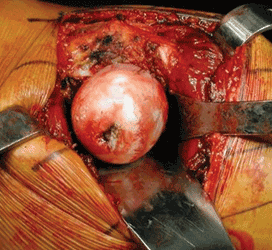Learn from others to minimize learning curve with hip resurfacing arthroplasty
A surgeon with extensive hip resurfacing experience finds its indications narrower than for THR.
Orthopedic surgeons experienced in hip resurfacing know that performing the procedure correctly is associated with a fairly steep learning curve. To help minimize that curve, a surgeon speaking at Orthopedics Today Hawaii 2010 discussed how his resurfacing results improved over time.
“There is no need for every surgeon to repeat the learning curve. Because there is now so much information out there, if you know what was learned by those before you, you do not have to repeat the learning curve,” said Thomas P. Schmalzried, MD, section editor for joint replacement on the Orthopedics Today Editorial Board.
He has completed more than 600 hip resurfacings using four different resurfacing systems, mostly in men with osteoarthritis. He said he has seen no femoral neck fractures, one sciatic nerve palsy and one revision each for avascular necrosis, infection and wear.
The sooner those new to the technique understand the proper indications, the better their results will be, he said.
Indications are narrower for hip resurfacing than for total hip replacement (THR) and include younger patients with a head-neck ratio greater than or equal to 1.2, neck length greater than or equal to 2 cm and good bone density.
“There is a demographic where resurfacing has an upper hand: young active patients at risk for failure with a total hip who have a good proximal femur,” he said.
Ideal hip resurfacing candidates have a nearly normal hip that lacks cartilage. Therefore, individuals with focal defects, severe deformity or poor biomechanics might benefit more from THR.
|
|
Images: Schmalzried TP |
“The experienced hip surgeon has a shorter learning curve than the average surgeon,” particularly regarding critical factors like exposure and component positioning, although there may be a 25-case learning curve before most major hip resurfacing complications are fully avoided, Schmalzried said.
Experienced hip surgeons had a 2% complication rate that was 3.7 times lower than their less experienced counterparts, according to a recent survey.
Yet, “Component positioning appears to be a problem even after 75 to 100 cases, even in the hands of an experienced surgeon,” Schmalzried said.
He suggested focusing on resurfacing around the neck rather than resurfacing the head and using a skin incision large enough for optimal exposure that provides sufficient visualization to mitigate notching the supralateral corner of the femoral neck.
Other surgical tips he provided were putting the pin to mark where the femoral component stem goes high on the femoral head and anterior, obtaining an easy press-fit of the socket and femoral component, and avoiding using excess cement, which may cause femoral neck fractures or problems fully seating the femoral component. – by Susan M. Rapp
Reference:
- Schmalzried TP. Hip resurfacing: Avoiding the learning curve. Presented at Orthopedics Today Hawaii 2010. Jan. 10-13, 2010. Kohala Coast, Hawaii.
- Thomas P. Schmalzried, MD, can be reached at 2200 W. Third St., Los Angeles, CA 90057; 213-484-7600; e-mail: schmalzried@earthlink.net.
![]()
Dr. Schmalzried has shared his extensive personal experience and knowledge of the literature regarding hip resurfacing arthroplasty highlighting the importance of surgeon education. As with all operative procedures, an understanding of appropriate indications is critical for optimal results. Work by Dr. Schmalzried and others experienced in hip resurfacing, as well as a review of the national registries, highlights the consistent effect of appropriate patient selection on the avoidance of complications. Although it can, be difficult to place a given patient into a specific risk category based on the age, sex or bone morphology, the recommendations outlined in the article help guide appropriate patient selection. A thorough understanding of the literature is also useful for patient education; most patients respond well to an explanation of why they may or may not be a suitable candidate for hip resurfacing as opposed to a dismissal of their interest in the procedure based on their demographics.
Also, Dr. Schmalzried highlights the importance of surgical technique, which includes adequate exposure and accurate placement of the resurfacing femoral component in the center of the femoral neck.
Given the wealth of information presently available it behooves the clinician to become a “student” of hip resurfacing prior to offering the procedure to patients in their own practice to minimize the risk of adverse outcomes.
– Craig J. Della Valle, MD
Chicago, Ill.


